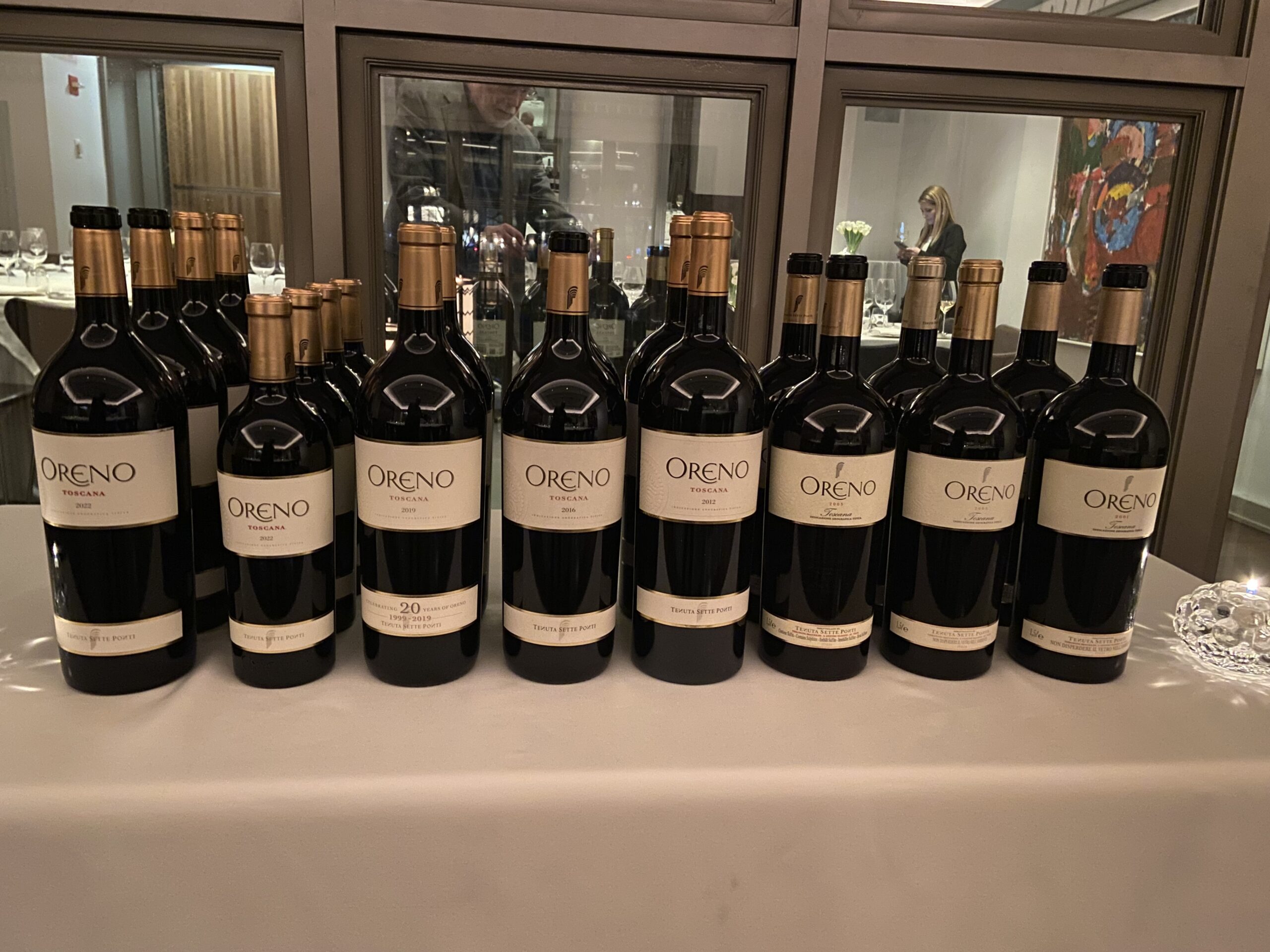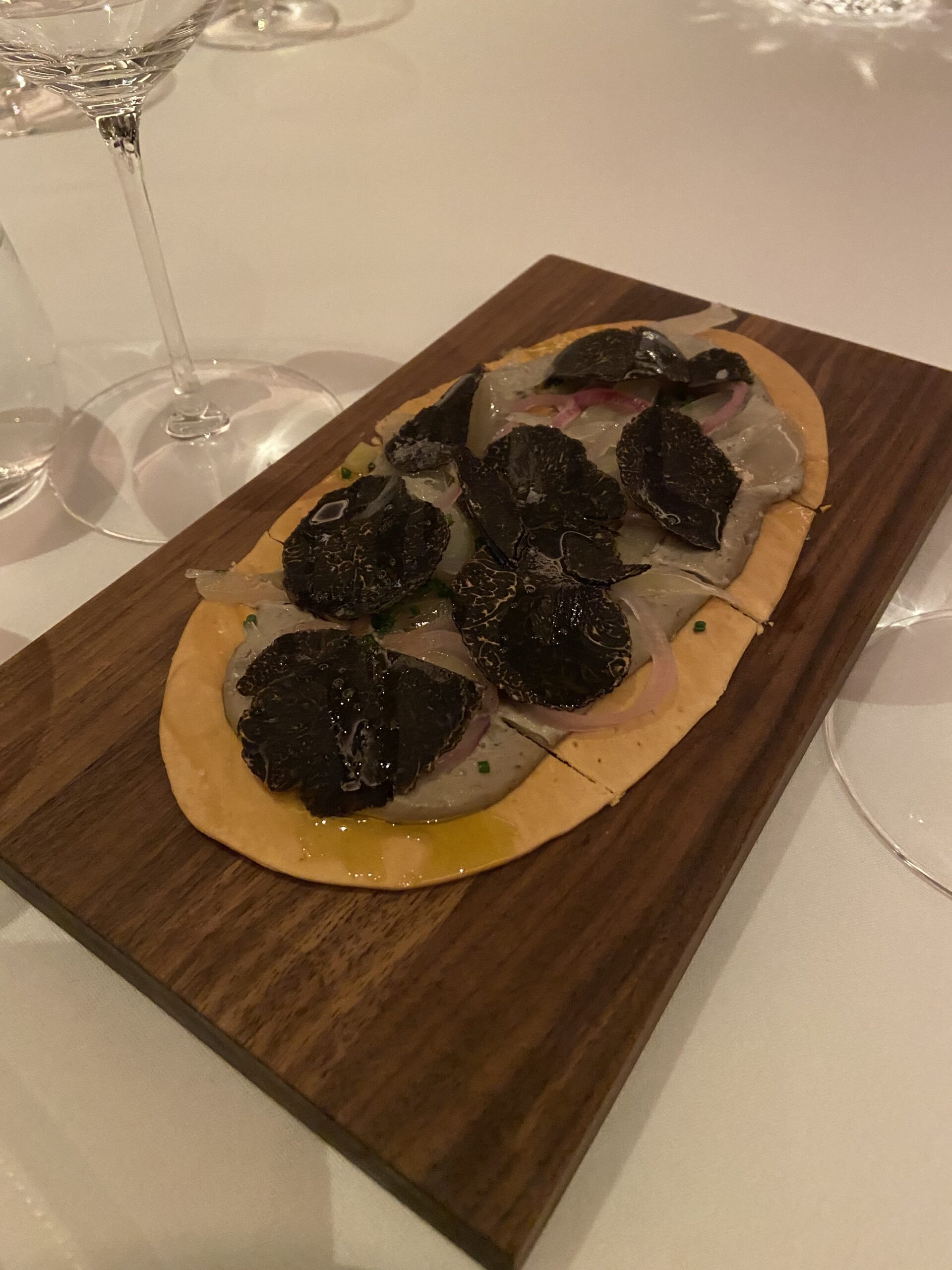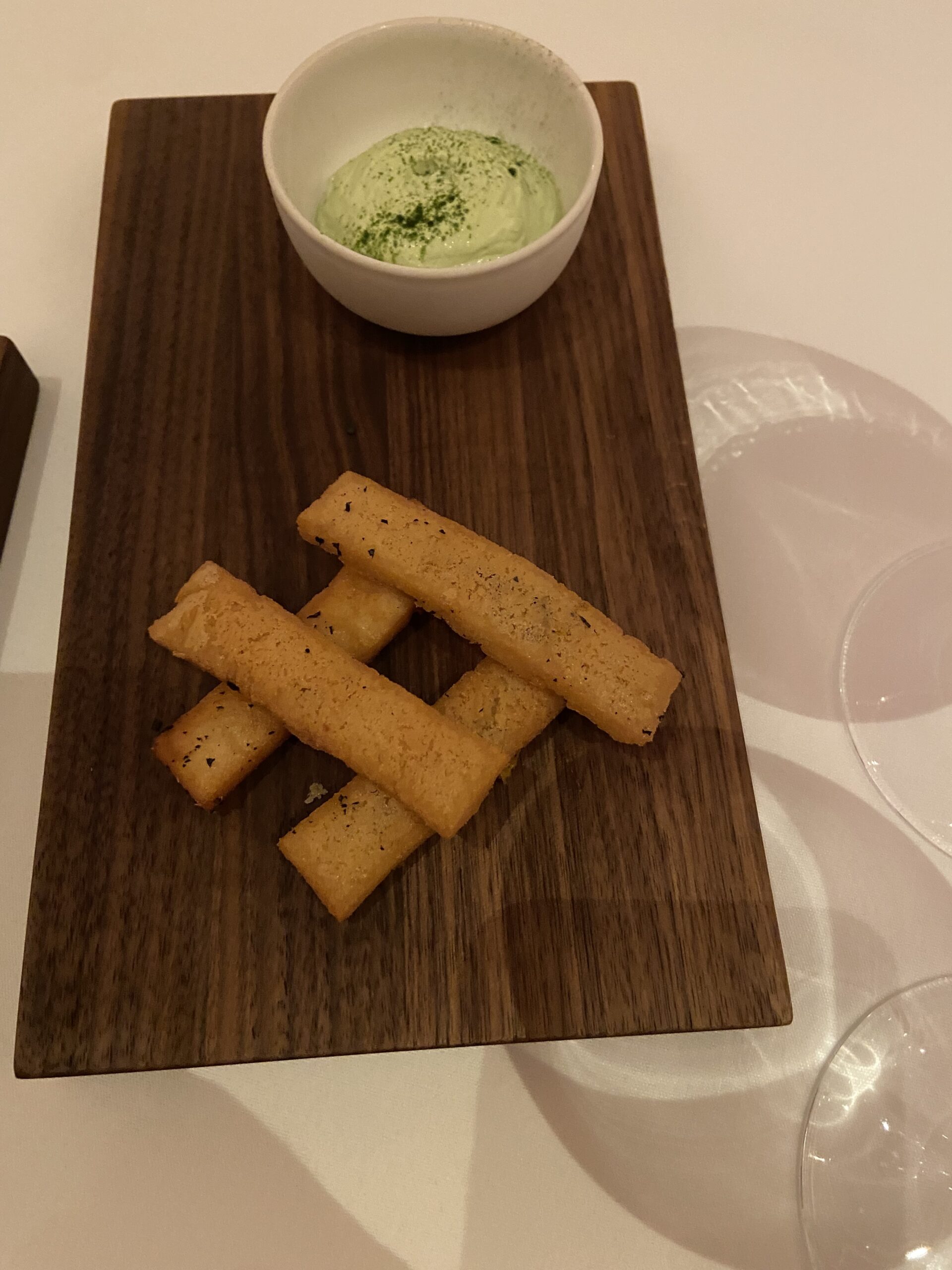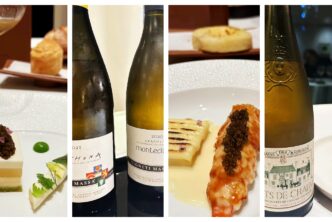It seemed ill-conceived. Matching upscale vegetarian cuisine with muscular Italian red wines. But, as is sometimes the case, the unconventional teaches a lesson—and this one taught two. Michelin three-star Eleven Madison Park with their plant-based food was the setting. Tenuta Sette Ponti’s Oreno, their flagship Bordeaux blend, was the wine. The lessons. Lesson one: if the food is good and the wine is good, then the match is good. In this case, the flavor that chef Daniel Humm and his team extracted from leeks, as in a leek tea, was other-worldly. More about the food later. Lesson two: Oreno’s back to the future-like journey appears to be a resounding success and has the potential to produce a majestic wine.
By a Tuscan timeframe, where more than a few producers date their origins to a thousand years ago, Sette Ponti’s Oreno is a new wine since its first vintage was the 1999. So, it’s understandable, and indeed, admirable, that Oreno is still a work in progress with the Cuseri family, the owners, tweaking it with successive vintages. The soon-to-be-released latest vintage, the expressive and captivating 2022 Oreno, represents a major, back-to-the-future stylistic change.
Alberto Moretti Cuseri, one of the sons of the founder, Antonio Moretti Cuseri, and the Sette Ponti’s worldwide director for export and sales, described their compulsiveness as a family. “We want to do things properly and not just ‘jump in.’” He recounted how his father spent a month just deciding what corks they would use. They started planting in 1989 but didn’t release their first wine until a decade later, to give the vines time to mature and the family time to fine-tune the blend. They started with a Sangiovese-based blend—they were in the heart of Tuscany—but over several years moved to a Bordeaux blend because Antonio was enamored of the wines from Bordeaux and saw the success of Sassicaia. Alberto describes the 2022 as “a new style without losing tradition [of a Bordeaux blend].” He exclaimed that pairing Oreno with vegetarian food was “a surprise for us.”

The sleek and stunning 2001 Oreno, a blend of Sangiovese (50%) with equal parts of Cabernet Sauvignon and Merlot filling out the rest, had developed magnificently, showing nuances of both fresh and dried fruits complemented by savory ones. Not a massive brut of a wine, it impressed with its elegance, length, and suave texture. Even at two decades-plus of age, it was bright and lively, showing the stature of great Italian Sangiovese-based wine. Thisn will easily last until 2034. The more massively framed 2005 Oreno emphasized Cabernet Sauvignon and Merlot (40% each) while reducing the contribution of Sangiovese. Increasing the new barrique aging to 80% also helped explain its heft. The olive-like savory character imparted by Cabernet added weight and an appealing counterpoint to its ripeness. With less charm and more power than the 2001, the richer 2005 was far less immediately appealing, still needing time in the glass for its stature to peek out. It can be drunk now, but will keep until 2040. The addition of Petit Verdot to the blend starting with the 2008 vintage, explains the even more massive character of the 2016 Oreno, a blend of Merlot (50%), Cabernet Sauvignon (40%), and Petit Verdot. Though they reduced the amount of new oak aging (to 40%), the muscular 2016 at this stage is so boisterous that it’s hard to hear the music, what I call a Texas steakhouse wine. Whether it ever comes into balance remains to be seen. I’d drink this between 2034 – 2054. With the 2022 Oreno, bottled but not yet released, the focus changes dramatically. Amedeo Moretti Cuseri, CEO and Antonio’s other son, explains, “We want the wine to have more finesse.” The stunning 2022 Oreno certainly does! He emphasizes, “we don’t want the oak and the wood to overwhelm the variety, so we want to have the primary aromas, like fruits . . . what we want is to have the terroir stand out.” To that end, they reduced the oak aging. Perhaps more importantly, they modified the blend, incorporating Cabernet Franc (10%), while reducing the amount of Petit Verdot and Merlot. Equally important, Amedeo stresses changes in viticulture, such as harvesting earlier to preserve acidity in the grapes that translates to vibrancy in the wine. In addition, they are doing less extraction during fermentation to bring out elegance. Amedeo continues, “The challenge is to have balance. . . between having an elegant wine that is already drinkable, but still complex, and that will also develop over 15, 20, and 25 years.” Sette Ponti’s winemaking team turned down the volume of the floral and finesse-filled 2022 Oreno so you could hear the panoply of notes clearly. Impeccably balanced, the 2022 Oreno delivers additional nuances with each sip. It’s an exciting wine whose charms are readily apparent while plenty of framework should allow gorgeous development over the next decades. A suave and silky texture—fine tannins at work—belie its structure. Truly, an iron fist in a velvet glove, that can be drunk now and until 2044.

But at “Eleven Madison Park”, high gastronomy is also part of the equation. And so, now for the food. The leek tea, really a bouillon, kicked off what turned out to be a unique and fascinating food and wine pairing. For me, bouillons are magic, you see what appears to be an innocuous bowl of clear broth, but then your palate is walloped with flavor. I can only imagine how many pounds of leeks were roasted to produce this bouillon. Along with the ‘tea,’ came two other stunning amuse-bouches. A dazzling Alsace-like tarte flambé of deeply caramelized onion topped with savory black truffle on a very thin whole wheat-like flat bread combined a tantalizing ying and yang of sweetness and savoriness. Crispy chickpea panisses (chickpea fritters) served with a light and intoxicating herbal garlic aioli reminded me of the socca found in Nice, improved, as is everything, by the addition of aioli!

A trompe-l’oeil of tonburi and roasted cauliflower accompanied by a scattering of fresh tarragon leaves appeared next. A mound of tonburi, a Japanese grain, was a visual dead ringer for sevruga caviar, which explains why it’s known as ‘land caviar.’ The startling disconnect between its appearance and its earthy grainy flavor made you pause in wonderment—and wishing for the real thing. Florets of roasted cauliflower were fine but could easily be made at home. The first bite of a tarragon leaf, on the other hand, exploded in the mouth. I’d like to know Eleven Madison’s source! Heady black truffles made their appearance again with a roasted meaty maitake mushroom served over a slice of perfectly cooked potato, the center of which had been hollowed out and replaced with minced mushrooms. The dish sang alongside of the 2022 Oreno, with the complexity of each playing off against one and other. The overly sweet chocolate chestnut dessert was disappointing, lacking a counterpoint of bitterness or at least a savory note.
To be fair, there were twenty-five of us around a single large table in an upstairs room, as opposed to the majestic towering ceilinged Art-Deco dining room of Eleven Madison Park, so the setting did not do the food justice. The bottom line: would I spend the $350 prix-fixed price, plus wine, tax, and tip? No, but this unique meal showed that if the food is good—it was—and the wine is good—you could have gnawed on a rubber tire and be thrilled by 2001 and 2022 Oreno—then the pairing works.

 中文
中文



